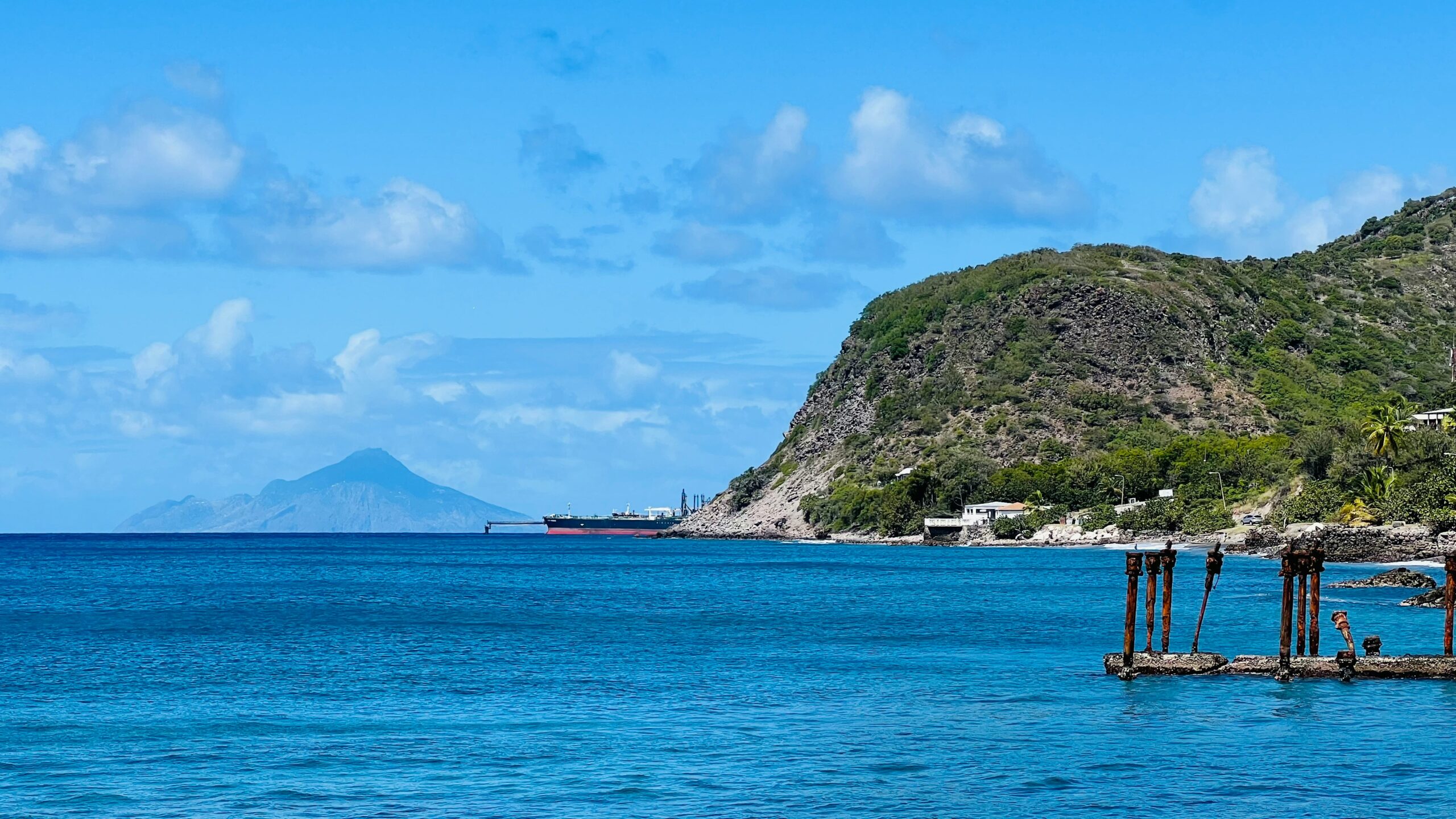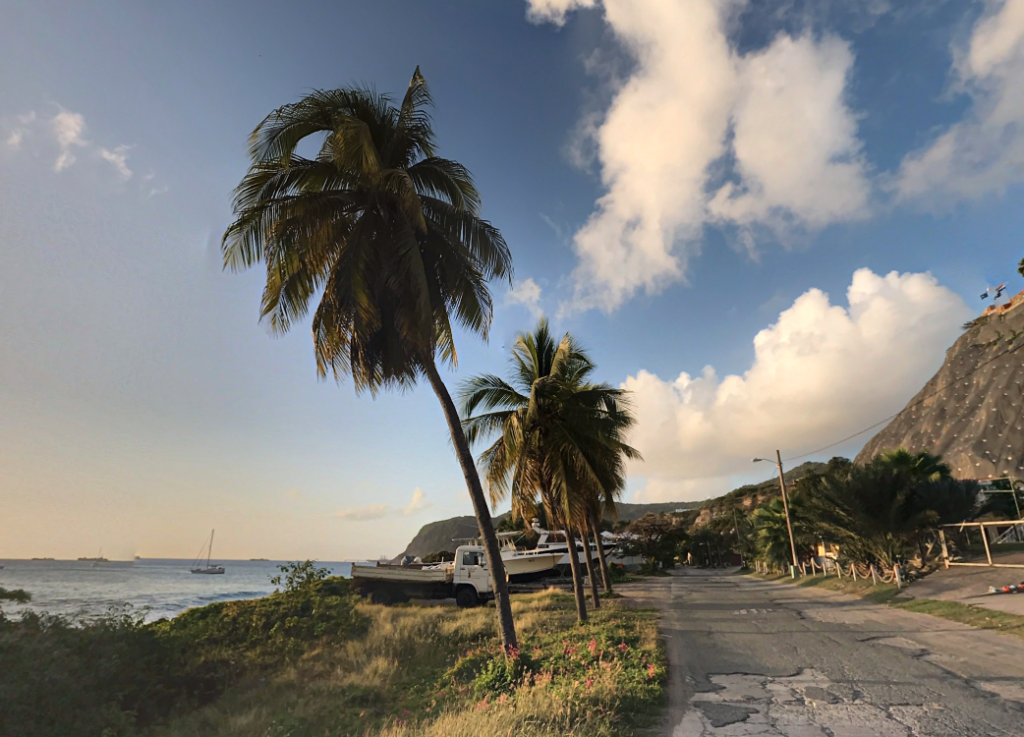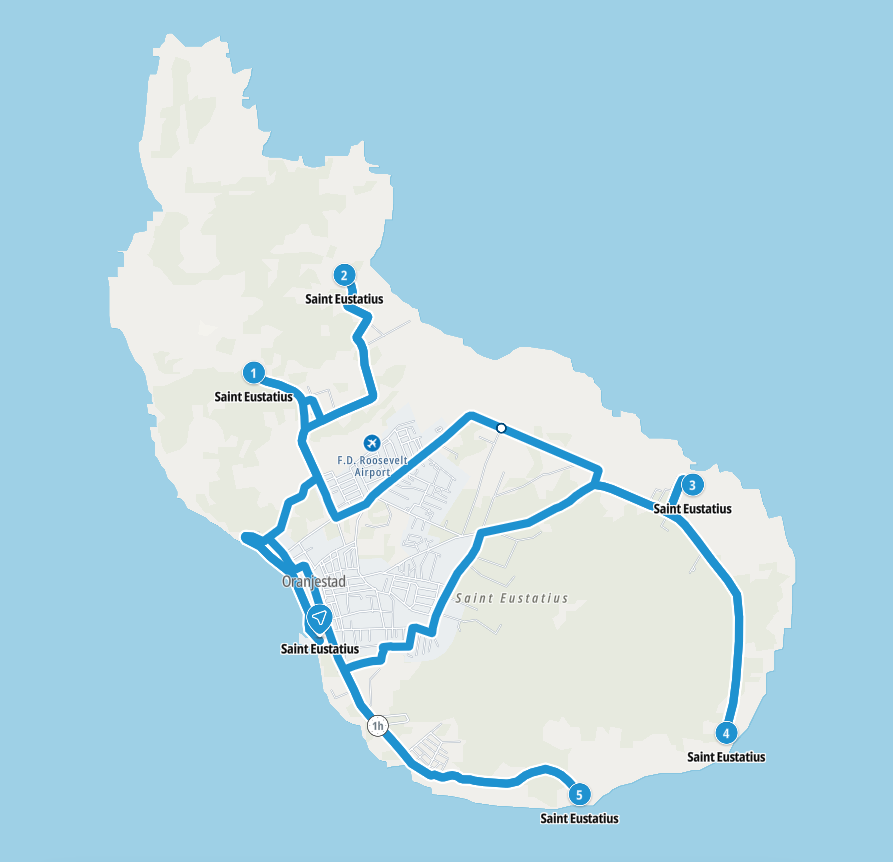Sint Eustatius – Let’s explore here
What’s it like in Sint Eustatius?
Sint Eustatius is a volcanic island located in the Caribbean Sea in North America. It is part of the Netherlands, although it’s not part of the EU. Sint Eustatius has a population of around 3,200 people (2024), about ⅓ of whom live in the capital city, Oranjestad.
Often called Statia, the island is about 6 miles (10 km) long and 3 miles (5 km) wide. In the south east of the island lies the Quill, a dormant volcano, at 1,972 ft (601 m) above sea level. In the north west lie several smaller mountains, with the population living in the plateau in between.

A bit about the history of Sint Eustatius
Early History and Indigenous People
Sint Eustatius was originally inhabited by the Arawak and Carib peoples. These indigenous groups used the island for fishing and small-scale farming. Their presence on the island predates European discovery, although little is known about the specifics of their settlements and culture.
European Discovery and Dutch Control
In 1636, the Dutch took control of Sint Eustatius, and the island became part of the Dutch Caribbean colonies. Due to its strategic location in the Caribbean, Sint Eustatius became an important trading hub during the 17th and 18th centuries. It played a key role in the transatlantic trade network, particularly in the exchange of goods such as sugar, tobacco, and enslaved people.
Economic Growth and “The Golden Age”
In the late 17th century, Sint Eustatius became a vital port for the Dutch West India Company and other international traders. The island grew wealthy from commerce, particularly from its role as a neutral port during the American Revolutionary War. Sint Eustatius was known for being one of the few ports that allowed ships from both the American and European sides of the conflict to trade freely. This earned the island the nickname ‘The Golden Rock’.
British Occupation and Decline
In 1781, during the American Revolutionary War, the British captured Sint Eustatius in an effort to disrupt American trade. After the British occupation, the island’s economy and its significance as a trading hub began to decline. Though it was returned to the Dutch in 1784, it never fully recovered its previous economic stature.
19th Century and Decline in Importance
In the 19th century, Sint Eustatius experienced a steady decline in economic activity. Its port was no longer as central to global trade, and agriculture became the dominant industry. The abolition of slavery in 1863, followed by the decline of plantation economies in the Caribbean, led to further economic hardship.
20th Century and Political Changes
Throughout the 20th century, Sint Eustatius remained a small, relatively isolated island. In 1954, it became part of the Netherlands Antilles, a federation of Dutch Caribbean islands. When the Netherlands Antilles was dissolved in 2010, Sint Eustatius became a special municipality of the Kingdom of the Netherlands, alongside Bonaire and Saba. This gave the island greater administrative integration with the Netherlands.
Modern Sint Eustatius
Today, Sint Eustatius remains a small, quiet island with a population focused on agriculture and tourism. It is known for its historical significance, including the ruins of its 18th century trading port and its role in the American Revolutionary War. The island is also recognized for its natural beauty, particularly its marine life, which attracts divers and ecotourists. Sint Eustatius continues to be an important part of the Kingdom of the Netherlands, with a focus on preserving its cultural heritage and fostering sustainable development.

Sint Eustatius road trip
Sint Eustatius is our 16th planned stop on our road trip through the islands of the Caribbean. Having explored Saba, our next stop is Saint Kitts and Nevis.
Travelling overland between the islands is quite prohibitive due to the lack of transportation options. Travelling between different island countries via ferry is possible, however, ferries only operate between some islands. Chartering private boats between islands is also possible, although travelling with a car in this way is prohibitive. Flying is another option, although again, flights only operate between some islands.
Map of our road trip through Sint Eustatius

This is a map of our planned route around the islands of Sint Eustatius, starting and ending in the port, Gallowsbay.
Weather in Sint Eustatius
When is the best time to visit Sint Eustatius?
The best time to visit Sint Eustatius is from January to May. During these months, the islands have 8-9 hours of sunshine per day and rainfall of 0.9 – 2.0 inches (24 – 50mm) per month. The temperature ranges from 24 – 31°C (75 – 88°F).
When is the worst time to visit Sint Eustatius?
The worst time to visit Sint Eustatius is from July to November. During these months, the islands still have 8-9 hours of sunshine per day. However, humidity rises and it rains an average of 2.6 – 6.8 inches (65 – 172mm) per month. The temperature ranges from 26 – 32°C (79 – 90°F).
Hurricane Season in the Caribbean
Hurricane season in the Caribbean runs from June 1 to November 30. Storms tend to be more frequent and more severe in the latter half of the season.
Hurricanes are least likely during December, January and February.
Travel in and around Sint Eustatius
Ferries to other Caribbean island countries from Sint Eustatius
Makana Ferry Services travels between Sint Eustatius and Sint Maarten, Saba and Saint Kitts several times per week.
What’s it like to drive in Sint Eustatius?
They drive on the right hand side of the road in Sint Eustatius. Roads are in fairly poor condition, with many being dirt tracks.
Do you require an international driving permit in Sint Eustatius?
We’ve created a dedicated page to driving abroad, which answers this question, and more, which you might find helpful.
Can you use your UK driving license when driving through Sint Eustatius?
We’ve created a dedicated page to driving abroad, which answers this question, and more, which you might find helpful.
Do I need a carnet de passages to drive in Sint Eustatius?
We’ve created a dedicated page to driving abroad, which answers this question, and more, which you might find helpful.
What are the speed limits in Sint Eustatius?
The speed limits for cars in Sint Eustatius are:
- 25 mph (40 km/h) for urban driving
- 35 mph (60 km/h) outside of built up areas
- 35 mph (60 km/h) on dual carriageways
- 35 mph (60 km/h) on motorways
What currency do they use in Sint Eustatius?
In Sint Eustatius they use the US dollar. Cash is widely used. The use of credit / debit cards is widely accepted in tourist areas. Travellers cheques are not generally accepted. There are many ATMs in tourist areas, although not all accept foreign issued cards.
You should make yourself aware of the amount that your bank charges you for using credit and debit cards abroad. Often credit cards are cheaper for purchasing items directly, and for withdrawing cash from ATMs.
What language do they speak in Sint Eustatius?
They speak English and Dutch in Sint Eustatius. Spanish is also spoken widely.
What time zone is Sint Eustatius in?
Remember, when you’re planning your next trip to take a look at what time zone it’s in.
Do I need a visa to visit Sint Eustatius?
We’ve created a dedicated, more comprehensive page on visas, which you should find helpful. Check it out!
Is wild camping legal in Sint Eustatius?
No, wild camping is illegal in Sint Eustatius.
What plug / socket type do they use in Sint Eustatius?
In Sint Eustatius they use plug / socket types A, B and F.



Health issues in Sint Eustatius
Is it safe to drink water in Sint Eustatius?
Yes, it is safe to drink tap water in Sint Eustatius. Bottled water is also readily available across the country.
What vaccinations are required for Sint Eustatius?
This NHS website is kept up to date with all relevant information on vaccinations in Sint Eustatius.
Phones in Sint Eustatius
What is the country calling code for Sint Eustatius?
The country calling code for Aruba is +5993
What are the emergency phone numbers in Sint Eustatius?
- The emergency number for police in Sint Eustatius is: 911
- In Sint Eustatius, the emergency number for ambulance is: 911
- The emergency number for fire in Sint Eustatius is: 911
If you’ve got some useful info that you’d like to share, let us know!
And don’t forget to check out all the other pictures!
